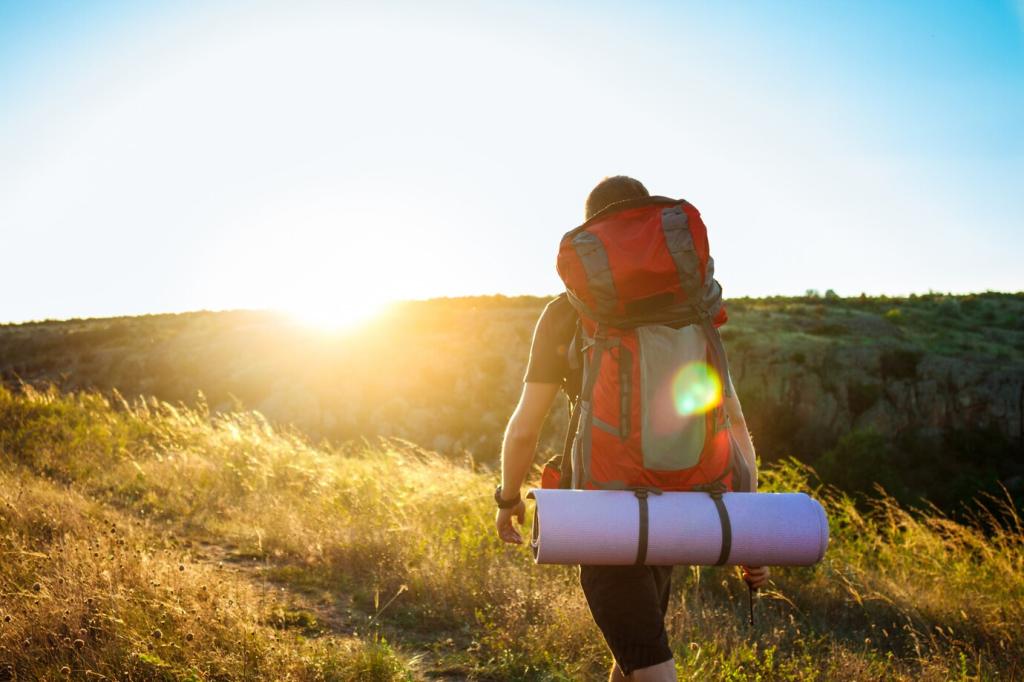Sustainable Travel: How Eco-Friendly Tourism Impacts the Environment
Selected theme: Sustainable Travel: How Eco-Friendly Tourism Impacts the Environment. Join us for inspiring stories, data-backed insights, and practical tips that help you explore the world while protecting it. Share your thoughts, subscribe for monthly eco-guides, and travel better—one mindful choice at a time.

The Real Environmental Cost of Tourism
Greenhouse Gas Emissions, Explained
A 2018 study estimated tourism contributes roughly eight percent of global greenhouse gas emissions, spanning transport, accommodations, food, and shopping. Choosing fewer flights, longer stays, and efficient itineraries cuts the biggest slice. Tell us: what’s your favorite low-carbon route that still feels adventurous and rewarding?
The Hidden Weight of Waste and Plastics
Single-use plastics often surge where tourism booms, especially in coastal hotspots with strained waste systems. Refill stations and reusables dramatically reduce the burden. We once swapped hotel water bottles for a filtered bottle in Bali, avoiding dozens of disposables over ten days. What reusable swaps work best for you?
Water and Energy Footprints of Stays
Laundry cycles, air conditioning, and long showers quietly add up. Eco-certified lodgings often use efficient fixtures, smart thermostats, and linen-on-request policies. In Seville, a small inn posted daily water metrics and invited guests to contribute ideas—simple transparency that inspired shorter showers. Would similar dashboards influence your habits?
Smarter Ways to Move: Low-Impact Transportation
Fast trips often mean more flights per year. Slow down: choose nonstop routes, cluster destinations, and linger longer. We took one long-haul to Portugal, then explored by rail and foot for three weeks—fewer emissions, richer memories. What city could you savor for an extra week to reduce flights?
Modern trains and long-distance coaches balance comfort with dramatically lower emissions than flying. Ferries can connect coastal gems without airport hops. On a night train to Vienna, sunrise painted the fields as we glided in—zero airport lines, smaller footprint, maximum story. Share your go-to low-carbon routes below.
Offsets are not a free pass; prioritize reduction first. When offsetting, choose verified projects with transparent reporting and community benefits. Insetting—supporting climate action within a company’s supply chain—can add credibility. Which climate projects feel most trustworthy to you, and why? Your recommendations can guide fellow travelers.

Decoding Trustworthy Eco Labels
Look for credible standards like GSTC-recognized certifications, Green Key, or LEED. Check if audits are independent, criteria are public, and data is updated. A glossy leaf icon isn’t enough—evidence matters. Tell us which certification you trust and why, so we can build a reader-sourced checklist together.
Habits That Actually Move the Needle
Reuse towels, turn off climate control when out, and avoid daily housekeeping. Refill your bottle, decline tiny toiletries, and pick plant-forward breakfasts. In a mountain lodge, we asked about their compost system and ended up touring their garden—proof that curiosity can nurture greener operations and deeper connections.
Avoid attractions that allow touching, riding, baiting, or unnatural interactions. Choose operators that follow strict distance rules and publish welfare standards. On a responsible whale-watching trip, our guide cut the engine early and let curiosity set the pace. Which wildlife providers have earned your trust and why?

Strengthening Communities Through Tourism
Spend Locally, Multiply Benefits
Dine at neighborhood restaurants, hire local guides, and buy handicrafts directly from artisans. Money circulates longer and sustains cultural knowledge. In a small weaving cooperative, a purchase funded new looms and apprenticeships. Tell us your favorite local businesses so readers can follow your footsteps responsibly.
Cultural Respect and Reciprocity
Learn greetings, ask permission before photos, and dress for context, not just comfort. Consider what you can give back—skills exchanges, donations, or simply thoughtful reviews highlighting ethical practices. Moments of humility often unlock the most meaningful connections, and they reduce the risk of cultural harm.
Case Study: Community Conservancies
In community conservancies, residents co-manage wildlife and tourism, earning income while protecting habitats. Visitors fund rangers, clinics, and scholarships. Experiences become less extractive and more reciprocal. If you have visited a conservancy or community-led reserve, what made the model work—and where could it improve?

This is the heading
Lorem ipsum dolor sit amet, consectetur adipiscing elit. Ut elit tellus, luctus nec ullamcorper mattis, pulvinar dapibus leo.

This is the heading
Lorem ipsum dolor sit amet, consectetur adipiscing elit. Ut elit tellus, luctus nec ullamcorper mattis, pulvinar dapibus leo.
